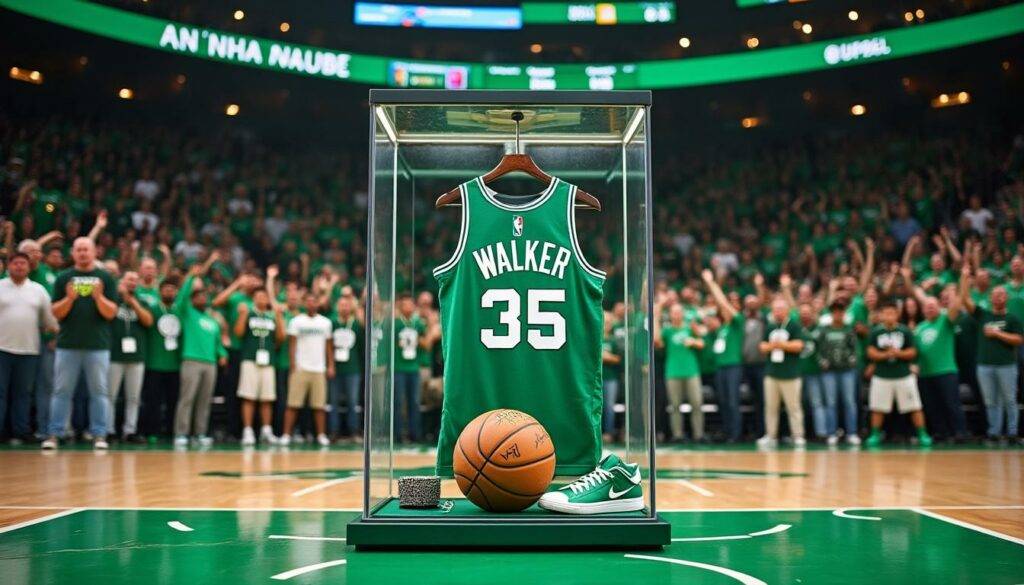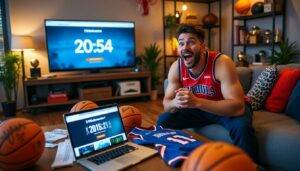A look back at significant moments in Boston Celtics history: the birth of Walker and the NBA's rule announcement for the Orlando bubble

In 2025, the Boston Celtics' legacy continues to be defined by watershed moments that blend on-court excellence with a culture of resilience. Two events stand out for capturing the franchise’s evolution: the birth of Antoine Walker—an influential forward who helped redefine the Celtics in the late 1990s—and the NBA’s Orlando bubble rules memo, which charted a safe path to completing the 2019-20 season amid a global pandemic. This look back connects those milestones to the broader Celtics story, highlighting how talent, timing, and smart policy shaped a franchise that’s always been about more than raw wins and losses.
- Antoine Walker was born in 1976 in Chicago, Illinois, a prodigy who blossomed at Kentucky and became a key Celtics figure across two stints in Boston.
- 1996 NBA Draft — Walker was the sixth overall selection by the Celtics after starring for Kentucky, where he secured an NCAA championship in 1996.
- All-Rookie First Team honors marked his fast start in the league, signaling a versatile forward who could impact the game on multiple levels.
Antoine Walker: Birth, Celtics Career, And The 1996 Draft Impact
Walker’s journey from Chicago to the NBA reflects the Celtics’ talent-detection ethos and the era’s evolving forward role. Drafted sixth in 1996, he arrived with a championship pedigree from Kentucky and quickly made an impression in Boston. His two stints in green—seven seasons in the first run, a brief return in 2004-05—saw him become a cornerstone of the team’s interior-perimeter balance. The on-court impact was quantified in steady production and notable star power, including multiple All-Star selections that underscored his two-way value.
- Two Celtics stints bookend his prime, with a notable return that bridged eras for the franchise.
- All-Star recognition during his Celtics years highlighted his versatility as a scorer, rebounder, and playmaker.
- Celtics-era averages of 20.6 points, 8.7 rebounds, and 1.5 steals per game across both stints paint the portrait of a durable, multi-dimensional forward.
- Career arc featured a later stint with the Dallas Mavericks and a championship with the Miami Heat in 2006, underscoring the broader context of Walker’s era.
Draft Spotlight: The 1996 Class And Walker’s Celtics Impact
Walker’s high-profile entry coincided with a transformative period for the Celtics, as the franchise balanced veteran leadership with a new generation of multi-position players. His blend of size, skill, and toughness helped redefine what a modern Celtics forward could be, a theme that echoes in today’s adaptive, positionless basketball culture. For fans and collectors, Walker’s era also foreshadowed the importance of brand and fan engagement in Boston’s green universe, where merchandise and nostalgia converge at Nike, Adidas, and Fanatics platforms.
- His path shows how a top-10 pick can anchor a franchise’s identity for an entire era.
- The balance of scoring and rebounding remains a blueprint for contemporary Celtics wings.
- Walker’s Celtics journey highlights the importance of continuity and mid-career reinvention in a demanding league.
Orlando Bubble Rules: The NBA's 2020 Plan To Finish The Season Safely
The NBA’s Orlando bubble memo, issued in 2020, created a controlled environment to complete the season during the pandemic. The plan prioritized safety, minimizing outside contact while preserving competitive integrity. It established clear limits on guests, strict quarantines, and campus restrictions designed to reduce distractions and exposure for players, staff, and families alike. This policy not only kept basketball alive but demonstrated how the league could adapt quickly to unforeseen challenges—an ethic that resonates with the Celtics’ resilience in tough years and tight playoff races.
- Players could bring up to four guests, with exceptions for children in certain cases.
- Seven days of quarantine before joining the NBA campus to minimize risk of transmission.
- Business relationships with chefs, trainers, and other service providers were excluded from guest eligibility to limit outside exposure.
- One game ticket per player for guests, with a potential extra seat for a child, helping manage crowd size and risk.
- Guests were restricted to the Disney campus, with no travel to theme parks, ensuring a contained environment for competition.
For deeper context, these stories intersect with ongoing Celtics coverage and historical analysis. Explore focused reads at the following outlets and articles:
- The Celtics Advance To Conference Finals For Third Consecutive Year
- Celtics Sweep Nets In Game 4
- Celtics Defeat Heat In Game 5 To Advance To Semifinals
- Celtics Defensive Strategy Against Cavaliers
- A Glorious Game 6 Revival: Celtics Show Their Teeth Against Heat
Brand references matter for Celtics fans in 2025 as well, with Nike, Adidas, New Balance, and Spalding continuing to shape gear, while Gatorade fuels the team’s stamina on long road trips. Mitchell & Ness, Foot Locker, ESPN, the NBA Store, and Fanatics remain essential touchpoints for fans seeking authentic Celtics apparel and stories.
Legacy Beyond the Court: Celtics Culture, Gear, And The Modern Era
The Celtics’ enduring appeal in the 2020s is powered by a symbiosis of performance, history, and consumer engagement. The franchise’s green identity remains a magnet for brands and fans alike, with gearlines and collaborations echoing the team’s competitive spirit. In practice, this means fans frequently access Nike or New Balance drops, browse Spalding-anchored basketballs for game-day readiness, and collect vintage Mitchell & Ness jerseys that celebrate the franchise’s rich past. Retail partners like Foot Locker and Fanatics help fans connect with the team’s story, while ESPN and the NBA Store keep the Celtics’ latest exploits in the national conversation.
- The Celtics’ brand legacy translates into wide merchandising across Nike, Adidas, and New Balance lines.
- Spalding, as the league ball, remains a common thread in practice, warmups, and televised games.
- Mitchell & Ness retro jerseys offer fans a tangible link to history.
- Foot Locker, NBA Store, and Fanatics power the official merchandise ecosystem and fan experiences.
- ESPN coverage ensures the Celtics’ moments reach a broad audience, maintaining relevance in 2025.
Frequently Asked Questions
When and where was Antoine Walker born, and what was his early basketball path?
Antoine Walker was born in 1976 in Chicago, Illinois. He starred at the University of Kentucky, where he helped win the NCAA championship in 1996 before being drafted sixth overall by the Boston Celtics in the 1996 NBA Draft.
What were the key elements of the Orlando bubble rules in 2020?
Specific guidelines included a limit on guests (up to four, with exceptions for children), seven days of quarantine before joining the campus, exclusion of certain business relationships from guest access, one game ticket per player for guests, and restrictions that limited guests to the Disney campus rather than visiting theme parks.
How did Walker’s Celtics years influence the franchise’s identity and playing style?
Walker’s two stints in Boston showcased a versatile forward who could score from the perimeter and crash the boards, helping the Celtics evolve toward a more flexible, multi-position approach. His All-Star recognition and career averages with the Celtics illustrate a bridge between traditional big-man play and modern, wing-forward impact, a blueprint that echoes in today’s Celtics’ commitment to adaptability and skilled two-way players.
Why does the Orlando bubble era matter for Celtics fans in 2025?
Beyond the immediate safety measures, the Orlando bubble demonstrated how the league can adapt under pressure, preserving competition and continuity. For Celtics fans, it underscored a franchise culture that values resilience, preparation, and the ability to maintain competitive momentum even when external circumstances force creative solutions.

